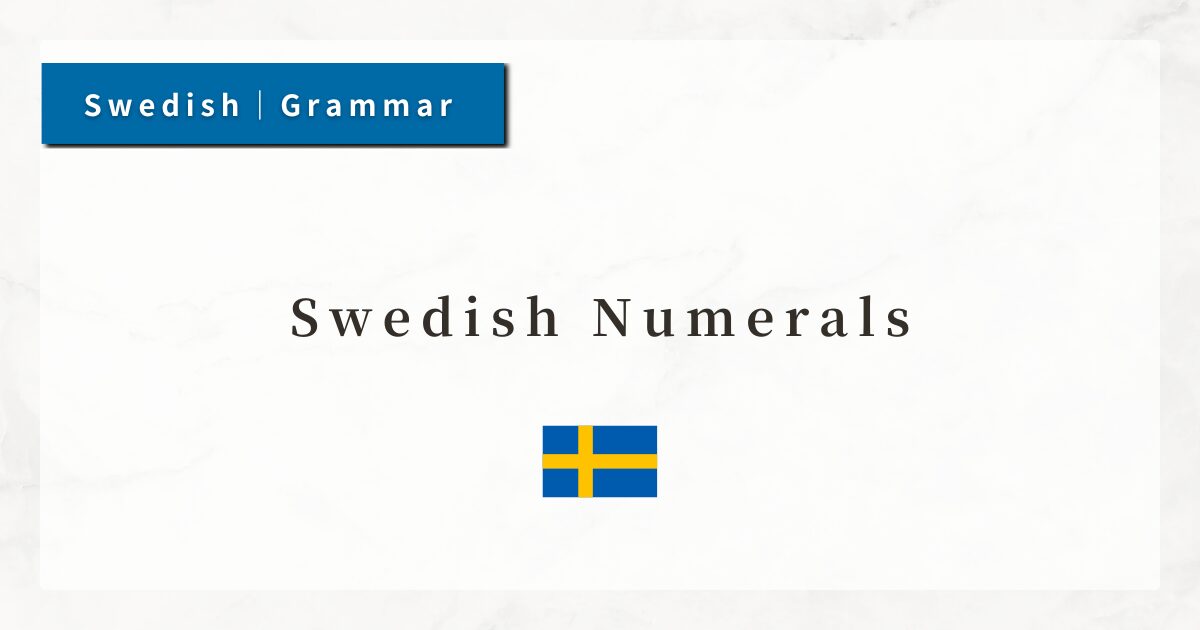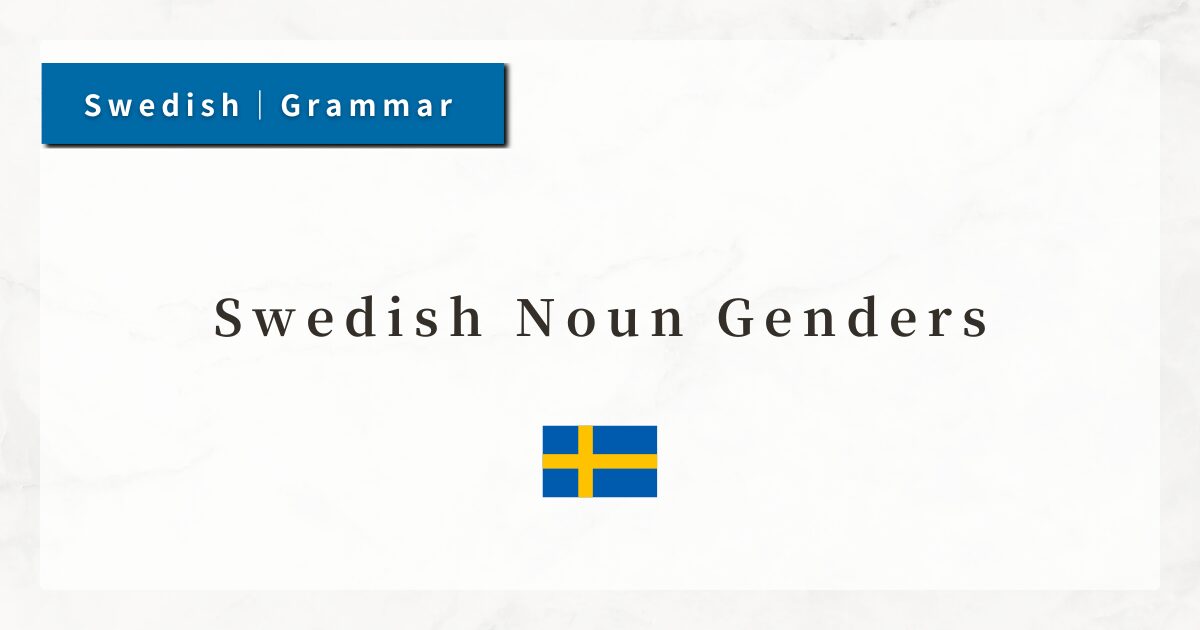#14 Swedish Numerals|How to Use Cardinal and Ordinal Numbers

In Swedish, numbers are expressed using cardinal numbers (1, 2, 3…) and ordinal numbers (first, second, third…).
Since numbers appear frequently in everyday conversation—whether for dates, order, room numbers, or prices—being able to use them correctly will greatly expand your ability to express yourself.
In this lesson, I explain the basics of Swedish cardinal and ordinal numbers, their usage, and important points to keep in mind.
1. Cardinal Numbers: Structure and Basic Forms
Cardinal numbers (1, 2, 3…) indicate quantity or amount. They are used when expressing things such as number of items, age, or prices.
1-1. Basic Forms from 0 to 20
Numbers from 0 to 20 are the most commonly used and should be memorized first.
They are extremely useful for shopping, telling age, time, and daily conversation.
| Number | Swedish |
|---|---|
| 0 | noll |
| 1 | en / ett |
| 2 | två |
| 3 | tre |
| 4 | fyra |
| 5 | fem |
| 6 | sex |
| 7 | sju |
| 8 | åtta |
| 9 | nio |
| 10 | tio |
| 11 | elva |
| 12 | tolv |
| 13 | tretton |
| 14 | fjorton |
| 15 | femton |
| 16 | sexton |
| 17 | sjutton |
| 18 | arton |
| 19 | nitton |
| 20 | tjugo |
1-2. Numbers Above 21
Numbers from 21 upwards are formed by combining the tens and ones into a single word.
- 21: tjugoen (20 + 1)
- 25: tjugofem (20 + 5)
- 32: trettiotvå (30 + 2)
- 100: hundra
- 1,000: tusen
2. Ordinal Numbers: Structure and Patterns
Ordinal numbers (first, second, third…) indicate order, rank, or sequence. They are commonly used for dates, floors, rankings, and order in a series.
- första gången
(the first time) - andra plats
(second place) - tredje våningen
(third floor)
2-1. Ordinal Numbers from 1 to 20
| Number | Ordinal |
|---|---|
| 1st | första |
| 2nd | andra |
| 3rd | tredje |
| 4th | fjärde |
| 5th | femte |
| 6th | sjätte |
| 7th | sjunde |
| 8th | åttonde |
| 9th | nionde |
| 10th | tionde |
| 11th | elfte |
| 12th | tolfte |
| 13th | trettonde |
| 14th | fjortonde |
| 15th | femtonde |
| 16th | sextonde |
| 17th | sjuttonde |
| 18th | artonde |
| 19th | nittonde |
| 20th | tjugonde |
2-2. The 1st〜 3rd Are Irregular
The first three ordinal numbers are irregular and must be memorized individually:
- 1st: första
- 2nd: andra
- 3rd: tredje
These occur frequently in daily conversation, so it is best to learn them early.
2-3. From the 4th Onward: -de / -te
Most ordinal numbers from the 4th onward are formed by adding -de or -te to the cardinal number.
- 4th: fjärde (= fyra + de)
- 5th: femte (= fem + te)
- 6th: sjätte (= irregular from sex + te)
From the 5th through the 20th, the pattern is fairly regular, making it easier to predict once you get used to it.
3. Using Cardinal Numbers: Quantity, Price, Age, and Dates
3-1. Expressing Quantity
Cardinal numbers are placed before nouns to indicate number.
- Jag har två katter.
(I have two cats.)
With numbers 2 and above, the noun is normally in the indefinite plural form.
(katt → katter)
3-2. Expressing Prices
Cardinal numbers are frequently used for money in daily life.
- Det kostar hundra kronor.
(It costs 100 kronor.)
Prices are expressed as number + currency (plural). kronor is the plural form of krona (1 krona).
3-3. Expressing Age
To say someone’s age, Swedish uses a construction with “år gammal.”
- Han är tjugo år gammal.
(He is 20 years old.)
Here, år (year) is combined with gammal (old).
3-4. Expressing Dates
Dates are often expressed with ordinal numbers preceded by the definite article den.
- Den 10 oktober.
(October 10.)
Here, den functions like a definite marker meaning “the.”
4. Using Ordinal Numbers
4-1. Expressing Rank or Placement
- Han kom på andra plats.
(He came in second place.)
→ på + ordinal + plats = to place/rank in a competition
4-2. Expressing Floors
- Vi bor på fjärde våningen.
(We live on the fourth floor.)
Here, fjärde modifies våning (floor) just like an adjective.
4-3. Expressing “First Time”
- Det är min första gång i Sverige.
(This is my first time in Sweden.)
första modifies gång (time/occasion).
4-4. Chapters and Sections
- Kapitel tredje handlar om familj.
(The third chapter is about family.)
Ordinal numbers are also used in books and academic writing.
5. Summary
- Swedish uses cardinal numbers (1, 2, 3…) to express quantity, and ordinal numbers (first, second, third…) to express order.
- “1” changes depending on noun gender: en (common) vs ett (neuter).
- Ordinals are used for rank, floors, dates, and order.
- From the 4th onward, most ordinals are formed by adding -de or -te, though the first three are irregular.
- Numbers above 21 are expressed as “tens + ones” in a single word (e.g., tjugoen, tjugofem).




